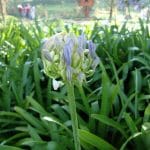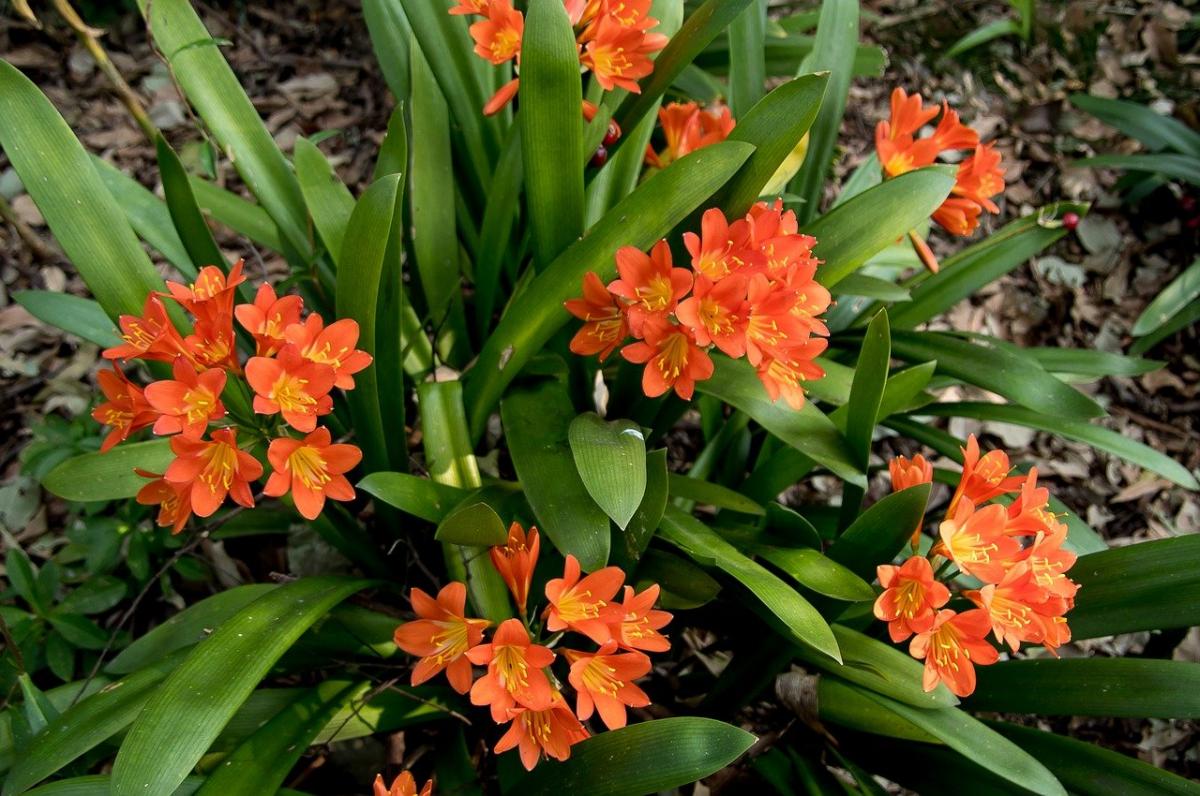
Plants with long, green leaves are very pretty. Many of them can be kept in pots or planters, and a few others are perfect in the garden, for example around trees, palm trees or even tall shrubs.
Their maintenance will depend a lot on the species to which they belong, but generally they are easy plants to care for, to which you only have to water and fertilize from time to time. But what are their names?
Agapanthus (Agapanthus africanus)
- Image - Wikimedia / Prenn
El Agapanthus africanus It is a herbaceous and rhizomatous plant widely grown in pots and gardens that enjoy a warm climate all year round. It develops tapered leaves with a length of 10 to 35 centimeters by about 2 centimeters wide, and of a dark green color. The height of the plant is 50 centimeters, and it has a width of 50-60 centimeters. From its center sprouts in summer a flower stem up to 60 centimeters high, and at the end of which numerous bluish or white flowers (about 30) emerge.
To grow healthy, it is important to have full sun, although it can be in semi-shade. It resists frosts down to -4ºC.
Asplenium (Asplenium nidus)
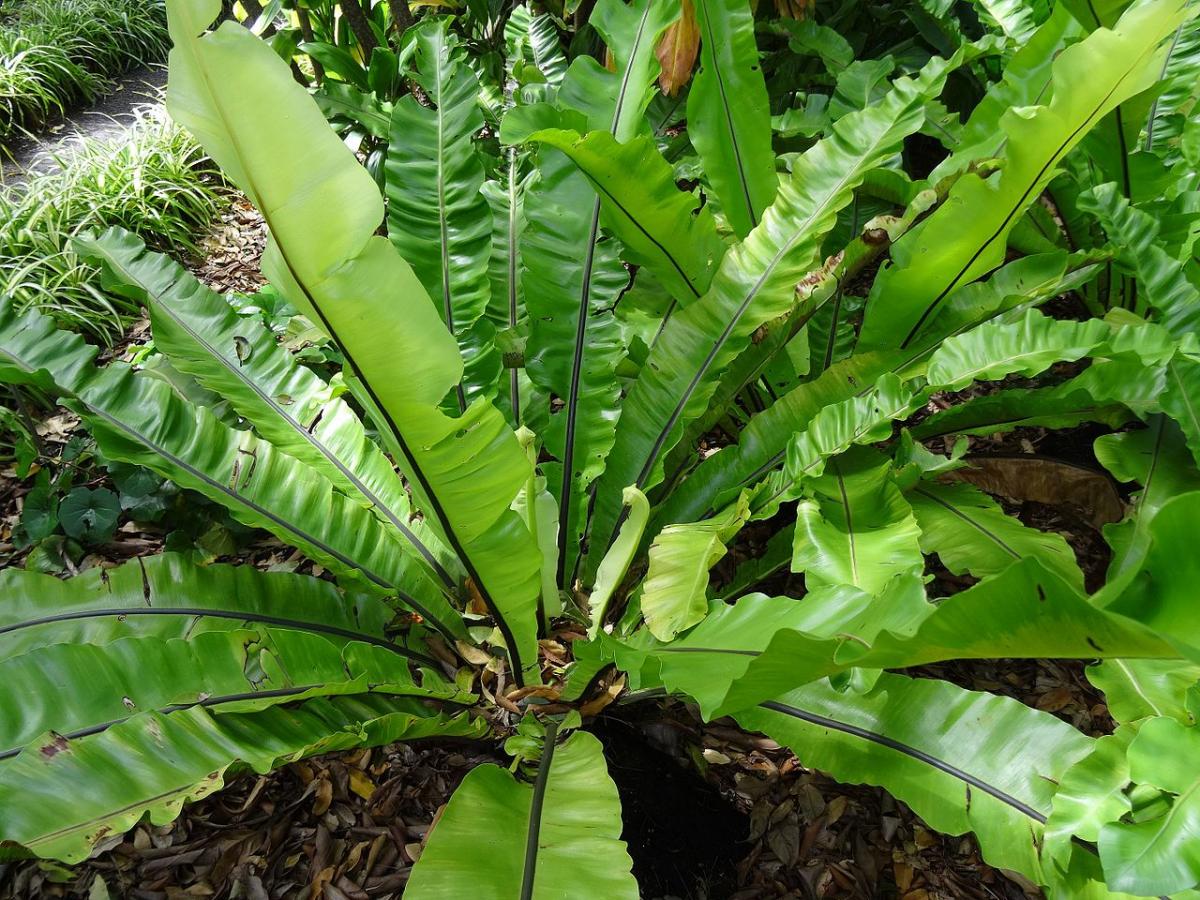
Image - Wikimedia / Vincent Malloy
El Asplenium nidus it is a fern that It can measure up to 2 meters high by 1 meter wide, but that in cultivation rarely exceeds one meter in height. However, it is a medium-sized plant, with lustrous green leaves and, like all gymnosperms, it does not produce flowers.
It is a species that lives well indoors, as long as it does not lack light or humidity. In the gardens you can also have it, in shade or semi-shade, but you must keep an eye on the snails. Resists frost down to -2ºC.
Tape (Chlorophytum comosum)
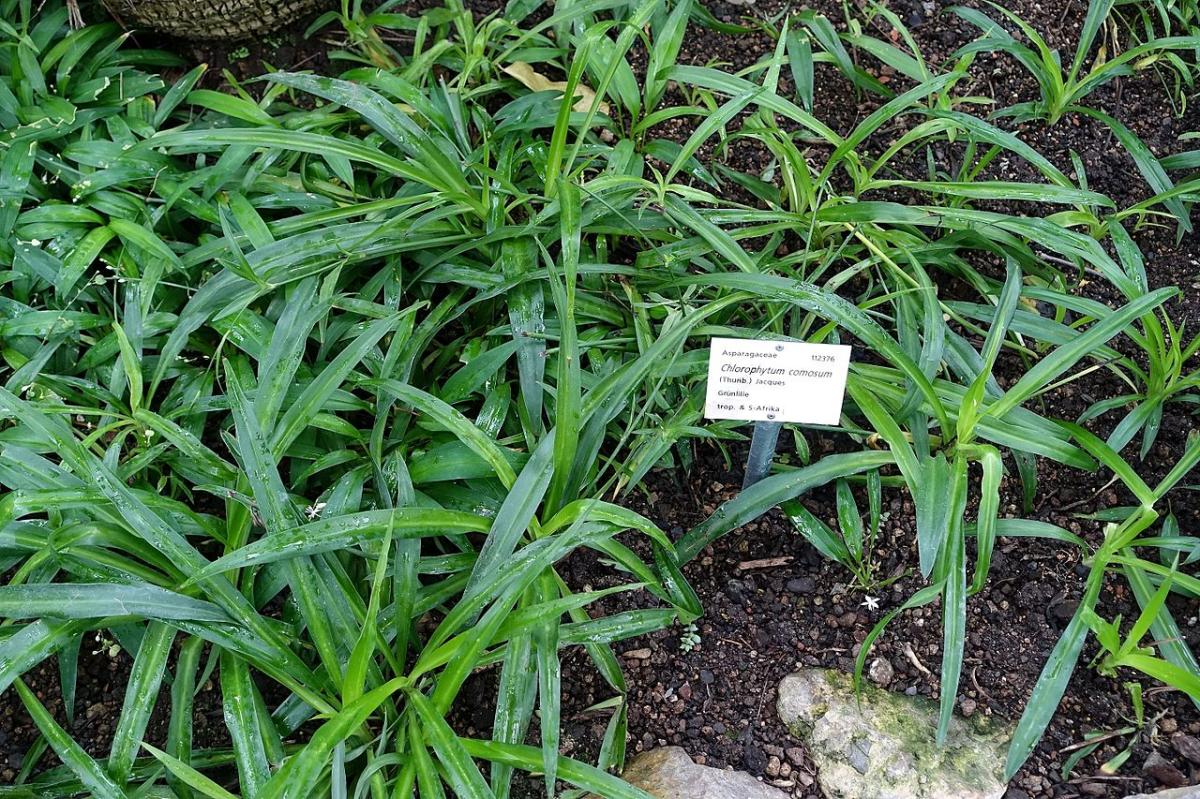
Image - Wikimedia / Vincent Malloy
El Chlorophytum comosum it is a perennial herb characterized by producing numerous green or variegated leaves (green with a whitish center) between 20 and 40 centimeters long by 5-20 millimeters wide and lanceolate. It tends to produce numerous stolons that arise from adventitious roots from an early age. The flowers are white and small, and they bloom in spring.
It must be kept in the shade, although if it is grown indoors, it prefers a room in which there is light. Exposure to the sun burns its leaves easily, so avoid hitting it directly. Resists up to -3ºC.
clivia (Clivia miniature)

Image - Wikimedia / Raul654
La clivia miniata It is a herbaceous and rhizomatous plant that reaches a height of 50 centimeters. Its leaves are elongated and wide, with a size of up to 50 centimeters long by up to 4 centimeters wide, and are dark green in color. In spring it produces orange flowers, although you can find specimens with white or yellow flowers.
In cultivation it must be kept in semi-shade or luminous shade, since the direct sun burns it. Irrigation should be moderate, avoiding drought but also waterlogging. It supports frosts down to -7ºC, but at -2ºC it loses its leaves.
Spatifilo (spathiphyllum wallisii)
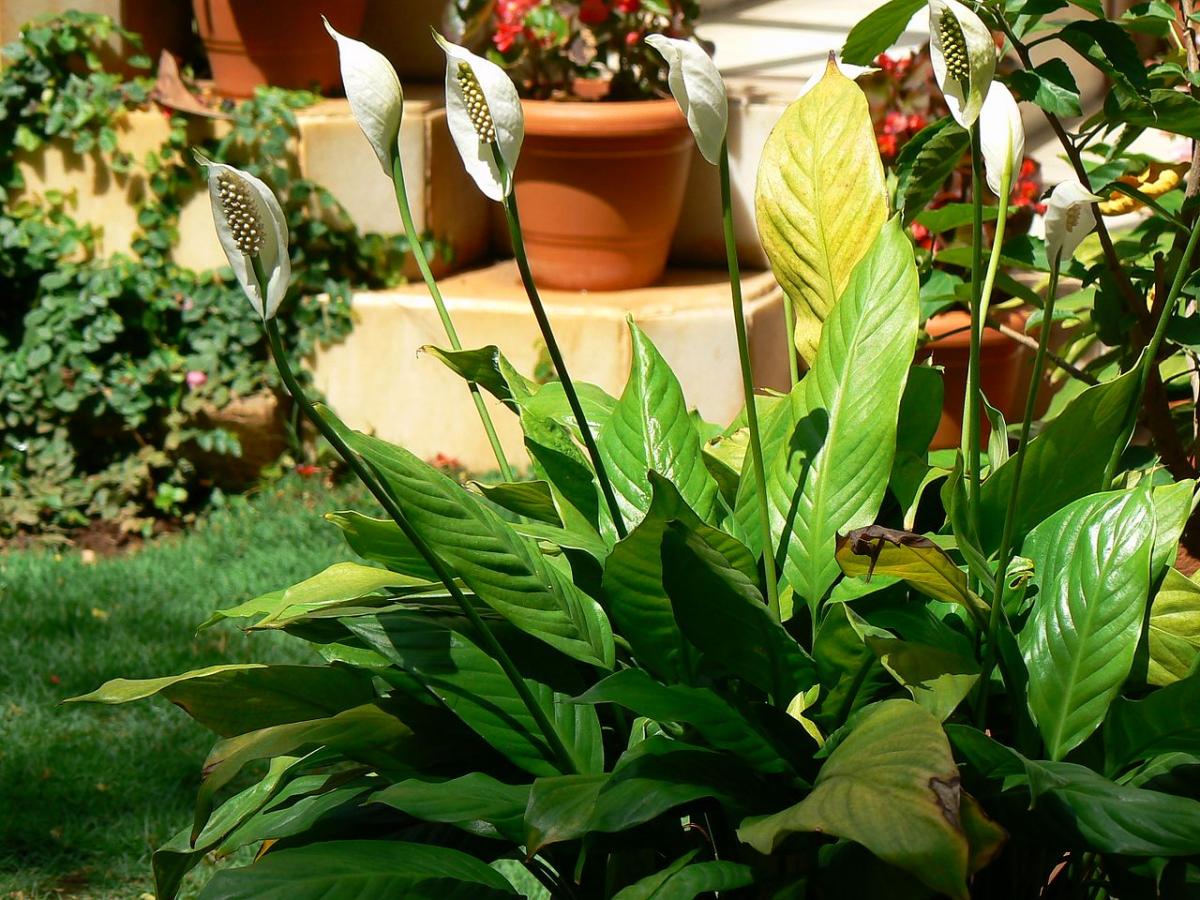
Image - Wikimedia / Dinesh Valke
El spathiphyllum wallisii is a herbaceous plant that reaches a height of 40-50 centimeters, and characterized by having green leaves 30-40 centimeters long by 3-5 centimeters wide. It usually blooms in spring under the right conditions, and it does so producing a spadix flower that is usually white.
Often kept as a houseplant, in a room where it is very bright. In any case, it is interesting to have it in the garden, in the shade, as long as there is no frost.
Neoregelia (Neoregelia carolinae)
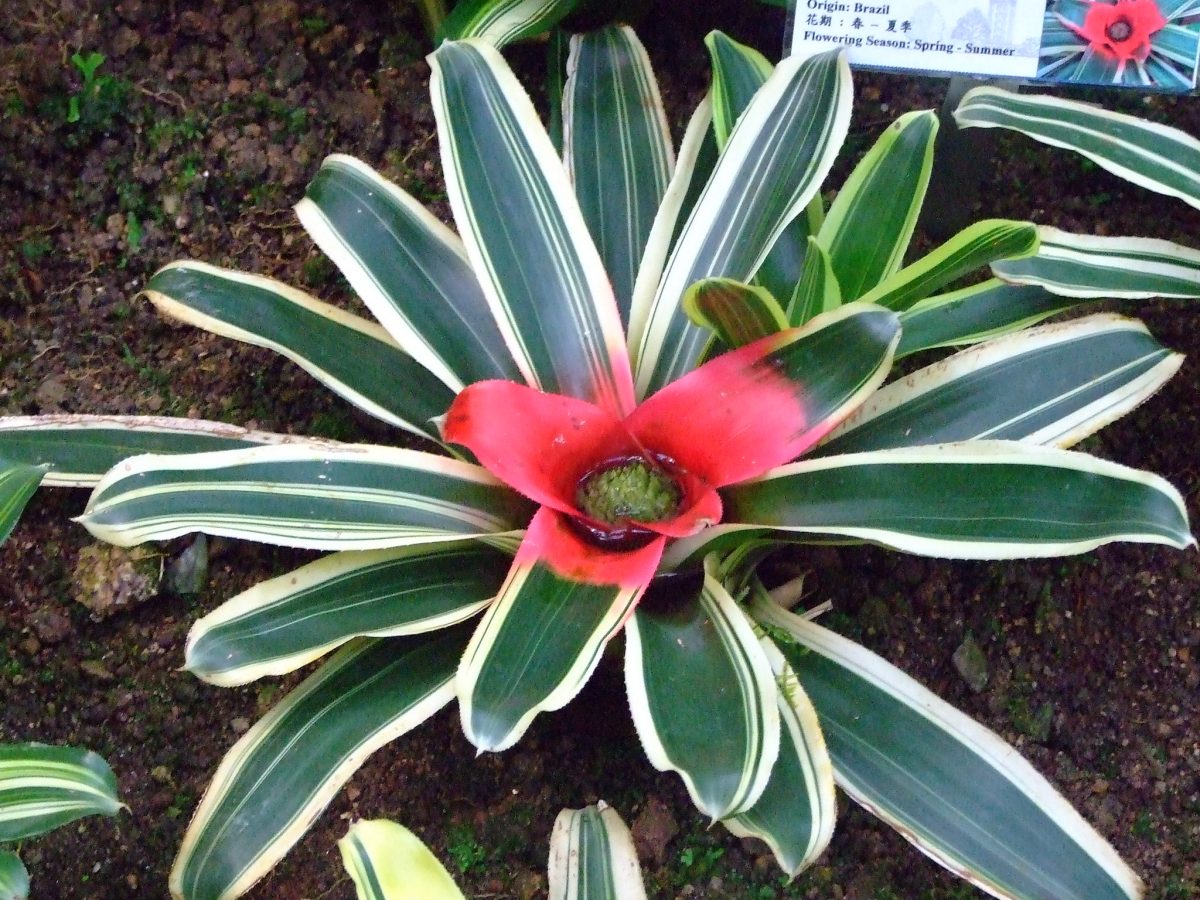
Image - Flickr / Kai Yan, Joseph Wong
La Neoregelia carolinae it is a bromeliad with a high ornamental value. Its leaves are acinate, about 40 centimeters long by about 5 centimeters wide, and green.. When it is about to flower, it produces reddish bracts in its center, and after flowering it dies. But that is not bad news, since before doing so it will have produced suckers.
Keep it in semi-shade, for example under a tree, and give it moderate watering. Also It can be planted in a pot and kept indoors if there is frost in your area, but in that case it will be important that it is placed in a room where there is a lot of light.
Nest (Nidularium innocentii)
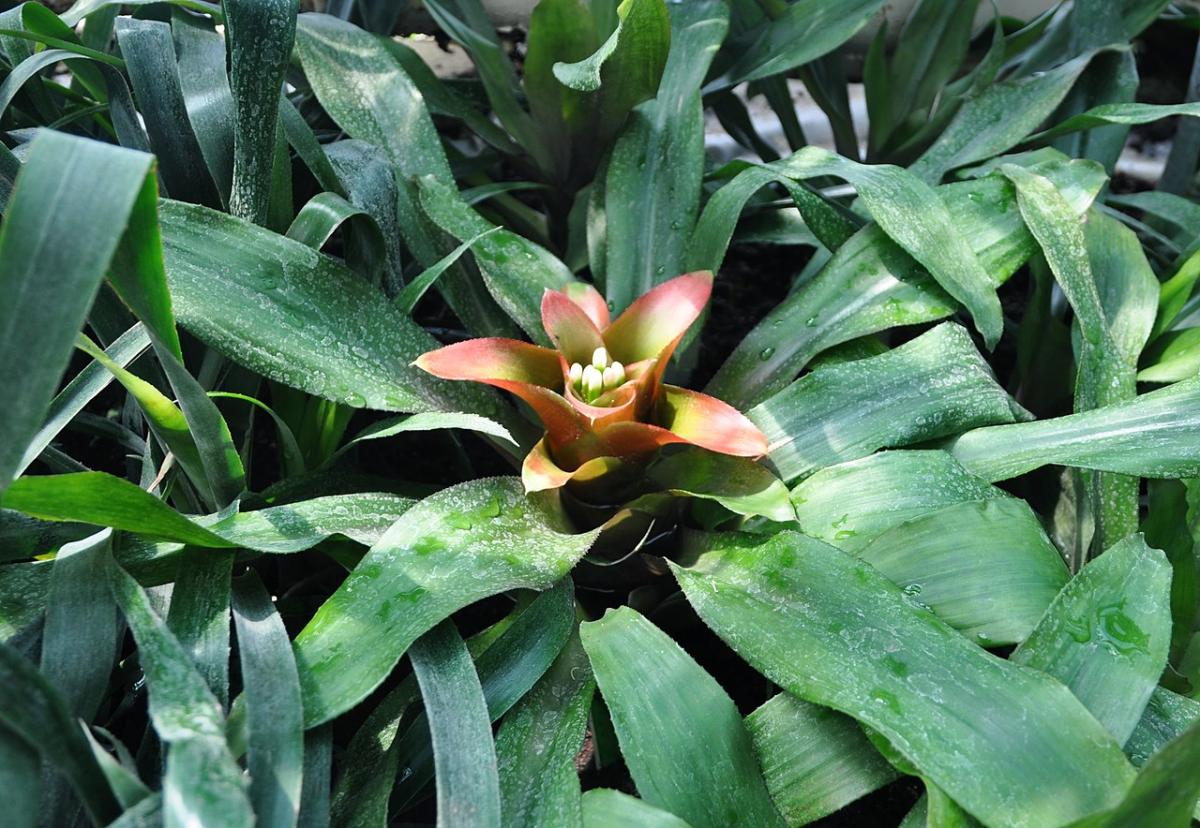
Image - Wikimedia / Dinesh Valke
All species of the genus Nidularium have elongated leaves, but we recommend the N. innocentii because it lacks thorns. It is a plant with tapered, dark green leaves that are 40 centimeters long by 3-4 centimeters wide.. It produces flowers formed by reddish bracts in the center, after which it dies leaving the suckers.
Grow it in partial shade, where it is in a bright area. The soil or substrate must be fertile and have very good drainage. Can't stand the cold.
Sansevieria (Dracaena trifasciatabefore Sansevieria trifasciata)

Image - Wikimedia / Peter A. Mansfeld
La sansevieria is a herbaceous plant without trunk or stem that produces leaves up to 140 centimeters long by up to 10 centimeters wide, normally green in color but can be variegated (green with yellow margins), or green-glaucous. The flowers appear in spring, grouped in clusters about 50 centimeters long, and are white.
It should be grown in partial shade, in well-drained soils or substrates. Its main enemy is excess water, since its roots need light and porous soils that quickly filter the precious element. It resists the cold, but it is not advisable to be outside if the temperatures drop below -3ºC.
Long leaf shoes (Phragmipedium longifolium)
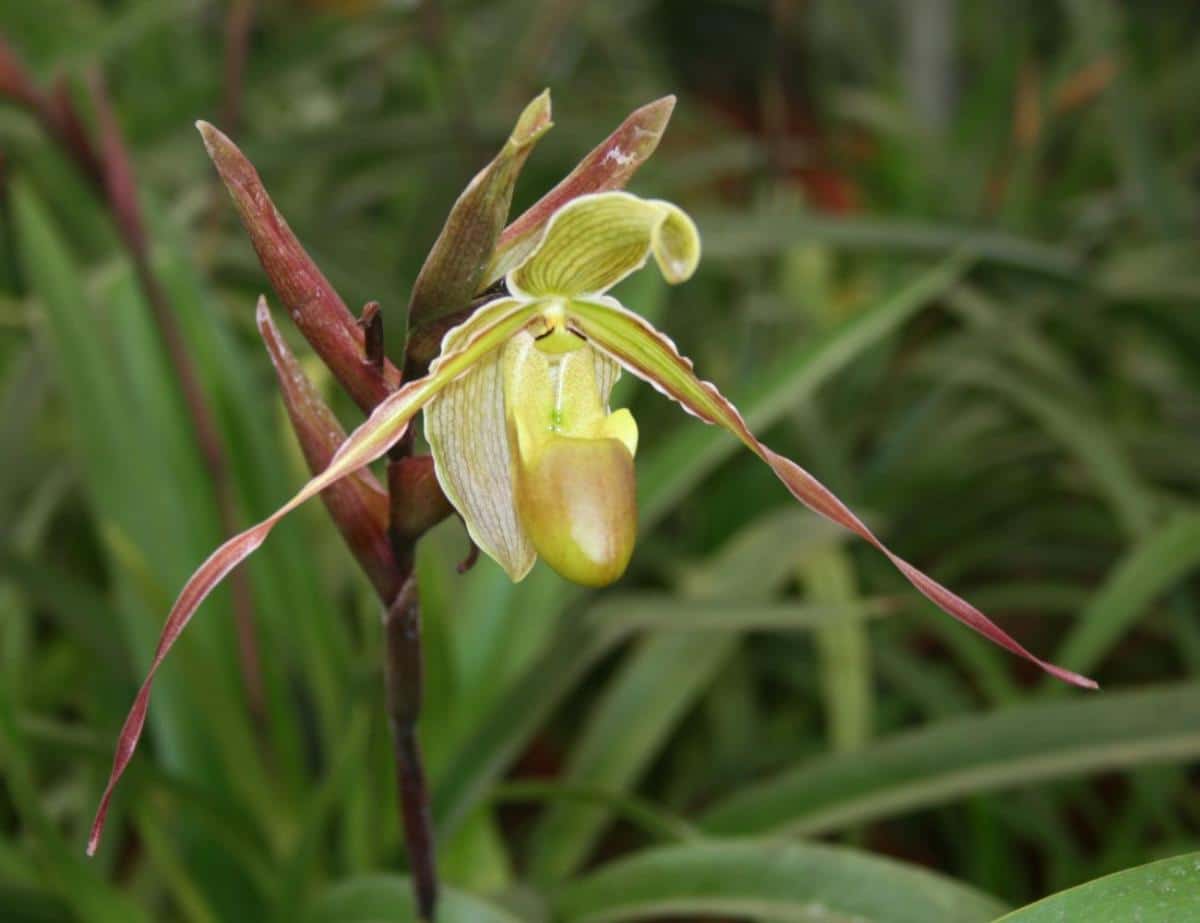
Image - Wikimedia / Franz Xaver
El Phragmipedium longifolium It is a species of perennial and rhizomatous orchid that grows among the rocks of the tropical forests. Its maximum height is 1 meter, and it can measure up to 60 centimeters wide. The leaves are tapered, elongated, and dark green in color. In late winter or early spring, its flowers sprout from a stem that is up to 1 meter long. The color of these varies depending on the variety: there are some that are pink, others green, others yellow and others maroon.
It must be grown in places where it is in partial shade, in pots with substrate for orchids such as pine bark. Likewise, it is highly recommended to fertilize it with a specific fertilizer for this type of plants in spring and summer, following the instructions for use. Can't stand frost, so if there are any, it will be kept indoors.
What do you think of these plants with elongated green leaves? Do you know others?
